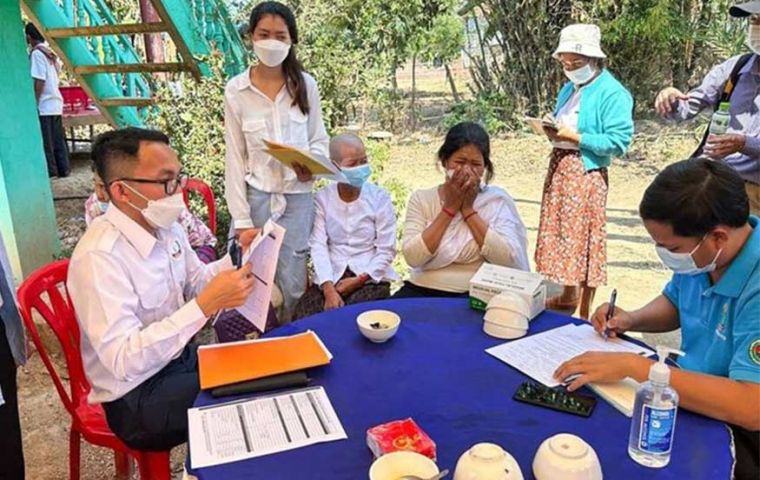
GENEVA, Feb 26 (NNN-MERCOPRESS) — World Health Organization (WHO) experts have expressed their concern after two cases of humans catching H5N1 avian flu were confirmed this week. During a virtual press conference, WHO Director of Epidemic and Pandemic Preparedness and Prevention Sylvie Briand said the situation was “worrying.”
The two cases were reported in Cambodia, where local authorities are in contact with WHO experts to jointly decide on the next steps to handle the crisis, which has led the international agency to reassess its parameters regarding the malady’s threat to humans. The conclusions reached earlier this month are now up for review.
On Thursday, Cambodian authorities reported the death of an 11-year-old girl from the H5N1 virus and began testing 12 of her contacts. Her father, who had shown symptoms, also tested positive for the virus, it was reported.
“The global H5N1 situation is worrying, given the wide spread of the virus in birds worldwide and the increasing reports of cases in mammals, including humans,” Briand said. “WHO takes the risk of this virus very seriously and urges all countries to intensify surveillance,” she added.
It is not yet clear whether human-to-human transmission had occurred or whether the two cases were due to the “same environmental conditions.”
On Thursday, Cambodian authorities reported an 11-year-old girl from Prey Veng province had died from H5N1, with subsequent testing of 12 of her contacts revealing that her father also had the virus.
“So far, it is too early to know if it’s human-to-human transmission or exposure to the same environmental conditions,” Briand said from Geneva.
“The global H5N1 situation is worrying given the wide spread of the virus in birds around the world and the increasing reports of cases in mammals including humans,” she added. “WHO takes the risk from this virus seriously and urges heightened vigilance from all countries.”
Earlier this month, the WHO assessed the risk to humans from H5N1 bird flu as low, although its director-general, Dr. Tedros Adhanom Ghebreyesus, said the recent spillover to mammals needed to be monitored closely.
“Since H5N1 first emerged in 1996, we have only seen rare and non-sustained transmission of H5N1 to and between humans. But we cannot assume that will remain the case, and we must prepare for any change in the status quo,” he said.
Bird flu is a highly infectious strain of avian influenza A virus that can cause severe respiratory disease and death in birds. While it has caused outbreaks before, the current epidemic has led to the devastation of avian populations around the world, including wild birds and commercial poultry.
From January 2003 to January 2023, there have been 868 cases of human infection worldwide, 457 of which were fatal. However, only six of these cases, and two deaths, occurred since the start of 2021.
Leading experts on influenza met this week to discuss the threat posed to humans by H5N1. The group of scientists, regulators, and vaccine manufacturers meets twice a year to decide which strain of seasonal flu to include in the vaccine for the coming winter season, in this case for the northern hemisphere.
”We are more prepared (than for COVID-19), but even if we are more prepared, we are not yet prepared enough,“ Briand said. ”We need to really continue the efforts for a flu pandemic.”
Experts have been tracking H5N1 clade 2.3.4.4b since it emerged in 2020 and recent reports of mass deaths in infected mammals from seals to bears, as well as potential mammal-to-mammal transmission on a Spanish mink farm last year, have raised concern.
Several companies that produce seasonal flu vaccines can also make pandemic flu vaccines, it was reported. GSK and CSL Seqirus are already working with the United States Biomedical Advanced Research and Development Authority (BARDA) to test shots based on one of the closely related strains. Having these strains ready could save about two months in the development of a vaccine, Briand said. — NNN-MERCOPRESS






